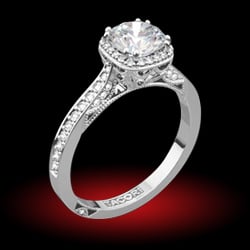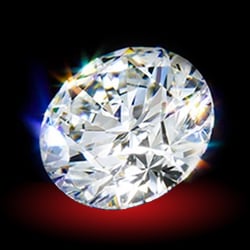Hi PriceScope members,
My GF and I would like to get a diamond with the best brilliance. After much reading we figured to get a very brilliant diamond we should get a stone with:
GIA excellent cut
AGS cut grade 0-2
HCA score under 2
The concern I had was that the stone might might rate well on these cut grading scales, but not be the most brilliant/good looking stone.
1. Are we taking the right approach to getting the most brilliant stone?
2. Would we be able to tell the difference between GIA excellent vs. GIA very good cut?
3. Should we be considering any other measurements such as idealscope pictures and gemadvisor models?
4. A Robbins bros. associate told us yesterday that there could be other factors (not listed on a lab report) that might make a stone less brilliant, such as being cut from a cloudy rough. Is that true, and is there any way to screen for that besides an appraisal?
We are considering buying the stone online because of the competitive pricing online, and might not be able to view it in person against other options so we wanted to make sure we are going down the right path in selecting a nicely cut, brilliant quality stone.
Other parameters we are thinking of going with:
Color: DEF
Clarity: vs2 or above, eye clean at a minimum
symmetry: excellent
no fluorescence or culet
Thanks everyone!! This site has been super helpful to us so far.
-EL
My GF and I would like to get a diamond with the best brilliance. After much reading we figured to get a very brilliant diamond we should get a stone with:
GIA excellent cut
AGS cut grade 0-2
HCA score under 2
The concern I had was that the stone might might rate well on these cut grading scales, but not be the most brilliant/good looking stone.
1. Are we taking the right approach to getting the most brilliant stone?
2. Would we be able to tell the difference between GIA excellent vs. GIA very good cut?
3. Should we be considering any other measurements such as idealscope pictures and gemadvisor models?
4. A Robbins bros. associate told us yesterday that there could be other factors (not listed on a lab report) that might make a stone less brilliant, such as being cut from a cloudy rough. Is that true, and is there any way to screen for that besides an appraisal?
We are considering buying the stone online because of the competitive pricing online, and might not be able to view it in person against other options so we wanted to make sure we are going down the right path in selecting a nicely cut, brilliant quality stone.
Other parameters we are thinking of going with:
Color: DEF
Clarity: vs2 or above, eye clean at a minimum
symmetry: excellent
no fluorescence or culet
Thanks everyone!! This site has been super helpful to us so far.
-EL







300x240.png)